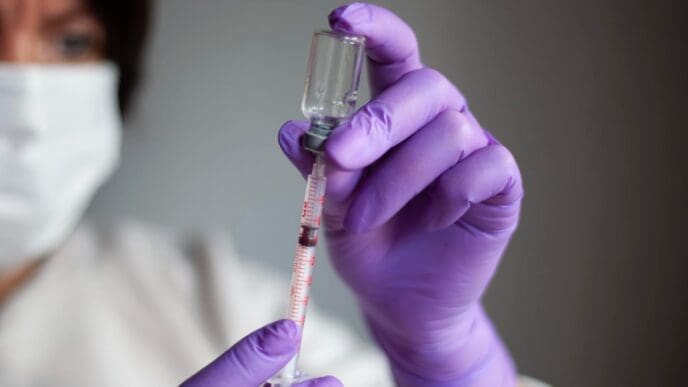That irritable, anxious, or suddenly gloomy feeling that descends for no apparent reason may have a surprising physical trigger: the sugar in your blood. A growing body of scientific evidence reveals a powerful and direct link between the fluctuations of blood glucose and our emotional state, affecting nearly everyone but posing a particular challenge for those with metabolic conditions or underlying mental health concerns. This connection stems from the brain’s profound dependence on a steady supply of glucose for fuel, and when that supply becomes erratic—spiking too high or crashing too low—it can disrupt key neurotransmitters and trigger stress hormones, leading to significant mood swings that can impact everything from our productivity at work to our relationships at home.
How Blood Sugar Fuels Your Brain
To understand the link between blood sugar and mood, it’s essential to first appreciate the brain’s unique energy demands. While it makes up only about 2% of your body weight, the brain consumes roughly 20% of your body’s total glucose supply. It is an incredibly energy-hungry organ.
Unlike muscles or the liver, the brain has very limited capacity to store glucose. This means it relies on a constant, moment-to-moment delivery of sugar from the bloodstream to function optimally. This steady stream of fuel powers everything from complex problem-solving and memory formation to the regulation of our most basic emotions.
When blood sugar levels are stable, the brain receives the consistent energy it needs to maintain cognitive clarity and emotional equilibrium. However, when these levels swing dramatically, the brain’s fuel supply becomes unreliable, setting the stage for emotional and psychological distress.
The Science Behind the “Sugar Rush” and “Crash”
Most of us are familiar with the concept of a “sugar rush” followed by a “crash,” but the physiological events behind this experience are a perfect illustration of how blood sugar impacts mood. This rollercoaster is driven by two states: hyperglycemia (high blood sugar) and hypoglycemia (low blood sugar).
Hyperglycemia: The Agitated High
Hyperglycemia occurs when there is an excess of glucose in the bloodstream. This typically happens after consuming a meal high in refined carbohydrates or simple sugars, such as a sugary soda, a pastry, or a large bowl of white pasta. The body responds by releasing a large amount of insulin, a hormone tasked with moving glucose out of the blood and into cells for energy.
While this process is underway, the high levels of sugar in the blood can directly impact the brain. Research shows that acute hyperglycemia can increase inflammation and oxidative stress, which can damage brain cells over time. In the short term, this state is often linked to feelings of agitation, anxiety, restlessness, and an inability to concentrate.
So, while a “sugar rush” might sound like a pleasant burst of energy, its neurological reality is often one of internal stress and tension, contributing to irritability rather than genuine happiness.
Hypoglycemia: The Anxious Low
Reactive hypoglycemia is the “crash” that often follows the spike. The initial surge of insulin released to manage the high blood sugar can sometimes overcompensate, pulling too much glucose from the blood. This causes blood sugar levels to plummet below the normal range.
When the brain senses this fuel shortage, it triggers an alarm. This initiates a counter-regulatory stress response designed to rapidly increase blood sugar. The adrenal glands release stress hormones, primarily cortisol and adrenaline (epinephrine), to prompt the liver to release its stored glucose.
It is this flood of stress hormones that is responsible for the classic symptoms of being “hangry” (hungry and angry). The adrenaline surge can cause shakiness, a racing heart, sweating, and intense anxiety or even panic. The cortisol can contribute to irritability, tearfulness, and a profound sense of fatigue and low mood, as the brain is quite literally running on empty.
Beyond Daily Moods: The Link to Anxiety and Depression
While occasional moodiness from a missed meal or a sugary treat is common, chronic blood sugar dysregulation can have more serious, long-term consequences for mental health. The same mechanisms that cause short-term mood swings, when repeated daily, can contribute to the development or exacerbation of clinical anxiety and depression.
Chronic inflammation, driven by repeated episodes of high blood sugar, is now understood to be a significant factor in the biology of depression. An inflamed brain is less efficient at producing and utilizing key mood-regulating neurotransmitters like serotonin and dopamine.
Furthermore, insulin itself plays a role in brain health and neurotransmitter function. When the body’s cells become resistant to insulin’s effects—a condition known as insulin resistance, the precursor to type 2 diabetes—it can disrupt these delicate chemical balances in the brain. Studies have consistently shown a strong correlation between insulin resistance and a higher risk of developing major depressive disorder.
This connection helps explain why individuals with metabolic conditions like type 2 diabetes or Polycystic Ovary Syndrome (PCOS), which is characterized by insulin resistance, report significantly higher rates of both anxiety and depression than the general population.
Strategies for Balancing Blood Sugar and Emotion
The good news is that blood sugar is something you can exert significant control over through conscious dietary and lifestyle choices. Stabilizing your blood sugar is one of the most powerful tools available for improving your emotional resilience.
Dietary Adjustments
The foundation of blood sugar management is what you eat. Focus on building meals that promote a slow, steady release of glucose into the bloodstream. A simple rule is to never eat a “naked carb.” This means pairing any carbohydrate source with protein and healthy fats, which slow down digestion and blunt the glucose spike. For example, eat an apple with a handful of almonds, not just the apple alone.
Prioritize complex carbohydrates like vegetables, beans, lentils, and whole grains over simple, refined ones. These foods contain fiber, which also helps to slow glucose absorption. At the same time, significantly limit or avoid sugary beverages like soda and fruit juice, as these liquid sugars are the fastest way to send your blood sugar soaring.
Consistent meal timing is also crucial. Skipping meals, especially breakfast, can lead to low blood sugar, intense cravings, and subsequent overeating of the wrong foods. Aim for three balanced meals per day or smaller, more frequent meals if that works better for your body.
Lifestyle Modifications
Beyond diet, other daily habits play a major role. Sleep deprivation is a key offender; just one night of poor sleep can impair insulin sensitivity and increase levels of the stress hormone cortisol, setting you up for a day of blood sugar volatility.
Regular physical activity is another powerful tool. Exercise helps your muscles use up excess glucose from the bloodstream, effectively lowering blood sugar. Even a 10-15 minute walk after a meal can have a profound stabilizing effect.
Finally, managing chronic stress is non-negotiable. Stress raises cortisol, and cortisol raises blood sugar. Incorporating stress-reduction techniques like mindfulness meditation, deep breathing exercises, yoga, or spending time in nature can help calm the physiological stress response and, in turn, help stabilize your blood sugar.
Knowing When to Talk to a Doctor or Therapist
If you experience severe or persistent mood swings that interfere with your quality of life, it’s vital to seek professional help. Start by speaking with your primary care physician. They can order simple blood tests, such as a fasting glucose or a Hemoglobin A1c (HbA1c) test, to assess your average blood sugar levels over the past three months and screen for prediabetes or diabetes.
Simultaneously, consulting with a mental health professional is a crucial step. A therapist can help you develop coping strategies for managing mood swings, regardless of their origin. They can also help you differentiate between mood fluctuations driven by physiology and those that may be part of an underlying mood disorder, ensuring you receive the most appropriate and comprehensive care.
Ultimately, the intricate dance between blood sugar and mood serves as a powerful reminder that mental health and physical health are not separate domains—they are one and the same. By paying closer attention to how we fuel our bodies, we can provide our brains with the stability needed to navigate the world with greater emotional balance and resilience. Taking control of your plate is one of the most direct and empowering ways to take control of your mood.












